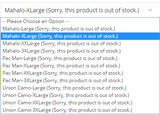Just want to talk about that topic, because i see it more than in any other
industrie i was around.
So much stuff in the ski industry is very limited, from Skis, over bindings to clothes.
Especially here in europe.
I had a very hard time getting the look pivot binding i was looking for, because it was sold out everywhere (bought it in UK now, i am from Germany).
Also Stuff like Saga Hoodies are most of the time out of stock, especially XL & Black.
I'm trying to buy one right now but i just can't find any, it's so annoying.
Don't these companys know that they sell a lot or is it just part of the marketing?
What do you think
A quick word on blocking ads

It looks like you are using an ad blocker. That's okay. Who doesn't? But without advertising revenue, we can't keep making this site awesome. Click the link below for instructions on disabling adblock.







